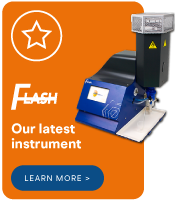What is compound formation interference in flame photometry?
- BWB Technologies
- Feb 16, 2022
- 2 min read
Updated: Mar 9, 2022
Compound formation is a type of interference that occurs due to the elevated temperatures present in the flame.
The threshold for some reaction's activation energies can be reached, due to the influx of energy from combustion.
It can then suppress the emissions of the analytes of interest during determinations of ionic concentrations.
Is it difficult to pick up compound formation interference in flame photometry?
Picking up on this type of interference can be difficult and sometimes can go unnoticed. It can be overlooked in the planning of the experimental process.
This is due to an interferant being present only when the sample is introduced to the flame of the photometer.
An interferant is a compound in a sample that produces readings which overlap those of the analyte, making analysis more difficult.
What is an example of compound formation interference?
The calcium content of boiler water is important to evaluate if the water softening plant of the boiler Is working efficiently.
Ideally, the calcium content of boiler water should be zero. The softening plant replaces calcium content with sodium to avoid the formation of limescale or calcium carbonate and instead forms sodium carbonate, which is water soluble.
Calcium carbonate, however, forms a layer of scale on the piping of the boiler. This reduces the ability of heat transfer in the pipework, leading to extremely dangerous working conditions.

How can I determine possible interferences that can occur in flame photometry?
If we were to directly measure the calcium content of this boiler water, we would not initially think that the signal is being depressed in the sample.
However, a common addition in boiler water is Sodium metabisulphite. Here, metabisulphite is added as an oxygen scavenger.
When metabisulphite or sulphites are heated in the flame, they would rapidly oxidise to form sulphates.
These are a well-known interference to calcium due to their affinity to bind strongly to one another. Their binding together significantly reduces the photon emissions from calcium that flame photometry detects.
To hinder this interference, a high concentration of Lanthanum or Strontium (1,000 ppm or more) would be added to the sample and standards to negate this formation of sulphates in the flame.
This determination is a very good example of why, when planning your photometry experiment, the full chemical make-up of the sample is needed to determine possible interferences that can occur in flame photometry.






